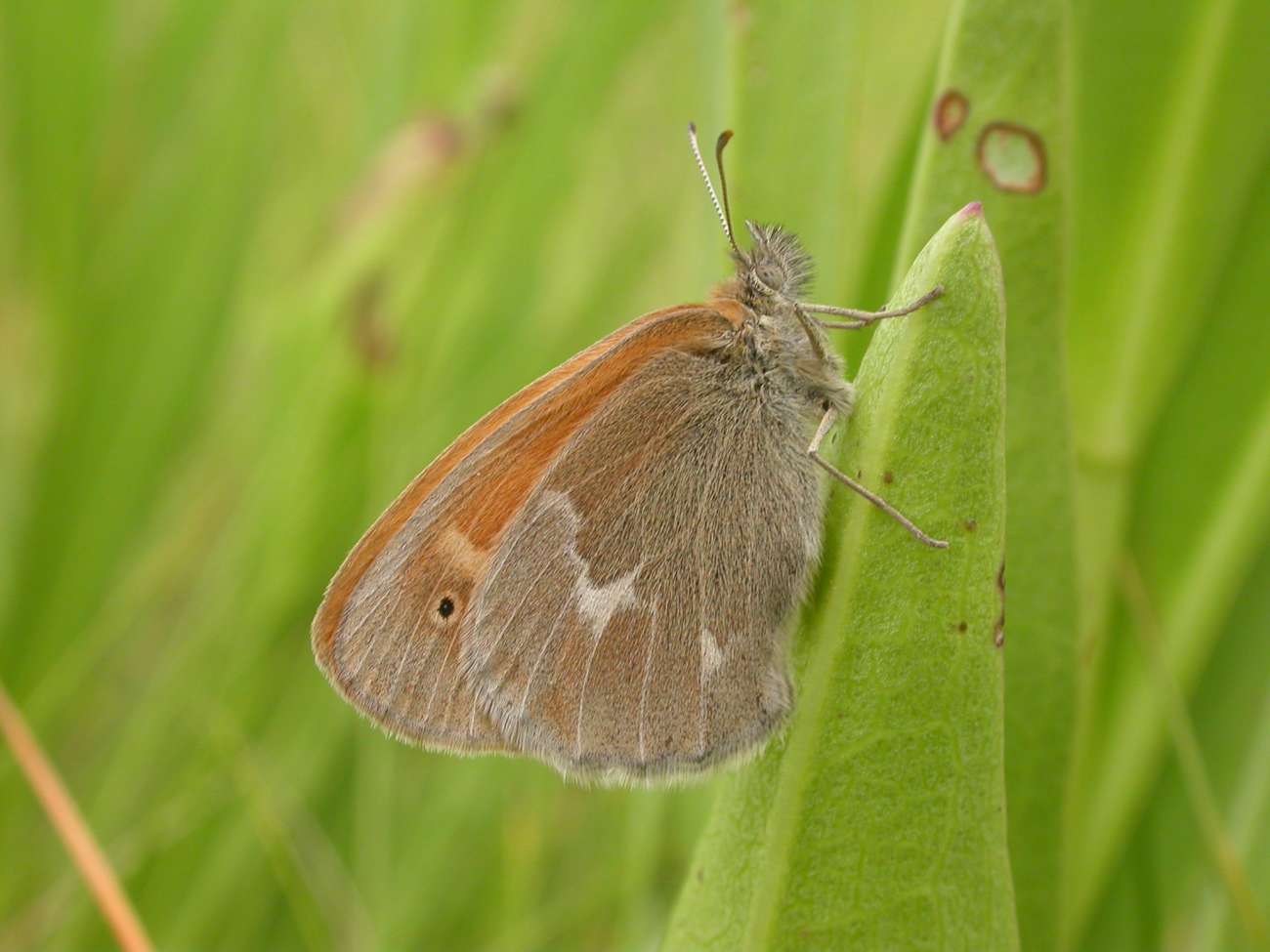The Maritime ringlet
Meet Marie!

About Marie: The Maritime Ringlet (Coenonympha nipisiquit) is a small butterfly with a wingspan measuring between 32 to 36 mm. This butterfly can be found in specific locations, including the Baie des Chaleurs in New Brunswick and the Gaspé Peninsula in Québec. It is distinctive due to its ochre-brown body color, with wings that become progressively paler on the upper side. Adult butterflies feature a dark eyespot (ocellus) on the upper side of their front wings. Females usually have a more pronounced eyespot and a slightly larger wingspan than males. Additionally, adult Maritime Ringlets have a very short lifespan, living only about a week!
As caterpillars, they primarily display green and yellow coloration, along with long, strap-like features. Marie and her family depend on salt marshes to find their host plant, saltmeadow cordgrass (Spartina patens (Ait.) Muhl.), where the female lays her eggs. The caterpillars even spend the winter at the base of this plant. For adults, the main nectar source is sea lavender (Limonia carolinianum).
The Maritime Ringlet has been listed as Endangered in Canada by the Committee on the Status of Endangered Wildlife in Canada (COSEWIC) since 1997.
Why are they important: The Maritime ringlet is one of the rare endemic species in Canada. In 2009, only 10 populations were recorded at three different locations. It is one of two species in North America that exclusively inhabits salt marshes, making it fascinating to study how a species adapts to a specific environment.
The main threats: Marie and her family are facing many threats including climate change and rising sea levels that could increase the intensity of floods on the marshes. Urban development and the spill of oil or other toxic chemicals are also directly contributing to the fragmentation and destruction of the habitat of maritime ringlets. Other factors include the picking of their main nectar source, sea lavender. Overall, the Maritime Ringlet is severely limited by its constantly threatened habitat.
However, the species has been listed as Endangered since 1996 by the New Brunswick Endangered Species Act which protects the species and its native habitat! A Recovery Strategy for the species has also been created by Environment Canada to prevent their extinction.
How we can help: If you are living close to their habitat, please avoid disturbing the salt marshes and do not pick sea lavender. Help protect this important ecosystem and spread awareness about the need for conservation efforts.
Conserve all of our resources; use less and reduce your impact. As endangered species like Marie and other pollinators suffer the consequences of climate change (pressure on native ranges and overwintering sites), it is important to use resources sustainably. Choose to shop locally and reduce your carbon footprint.
Finally, these species are suffering from our lack of knowledge. Talking and learning about them and the local efforts that are being made to help is also crucial for their survival. By letting your community know about their status, we are not letting Morgan and her friends disappear in silence.
Resources:
COSEWIC. 2009. COSEWIC assessment and update status report on the Maritime Ringlet Coenonympha nipisiquit in Canada. Committee on the Status of Endangered Wildlife in Canada Ottawa. vii + 34 pp. (www.sararegistry.go.ca/status/status_e.cfm).